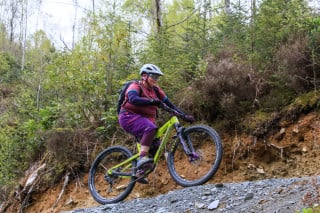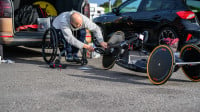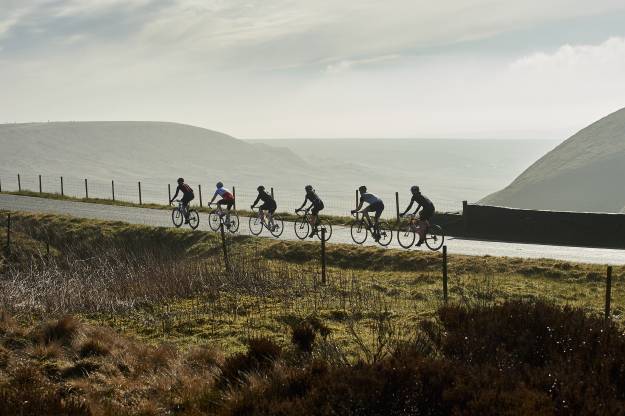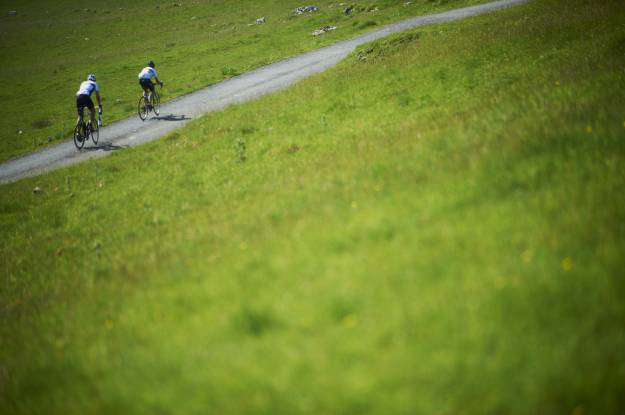Get a group of mountain bikers together and, along with wheel size, one of the most contentious issues is whether to ride flat or clipless pedals. You will find passionate advocates for both and even a small number of riders who will switch between the two. Here are the facts to help you make a decision.
Cycling background
One of the first things to consider is your cycling background. If you are coming to mountain biking from the road, you are likely to be familiar with and more comfortable on clipless pedals. However, if you come from a discipline where flats are more commonly used, such as BMX, or are just getting started cycling, then flats may be a better choice for you.
Pros of flat pedals
Easy bail out
If a section of trail or a feature suddenly get a bit too much for you, flats make bailing out or dabbing a reassuring foot down easier. Also, on fast corners, some riders like to put a foot out as an outrigger, again this is easier with flats.
Good technique
For some techniques such as bunny hops and rear wheel lifts, flat pedals teach you the correct foot position and technique. With clipless pedals it is possible to cheat and develop bad habits. Learning techniques such as power assisted front wheel lifts and track stands can be easier with flat pedals as the option of easily bailing out can give novice riders more confidence.
Getting going again
If you come to a halt on a steep climb or descent, getting moving again is far easier with flat pedals.
Hike a bike
If you are forced to get off and push, flat pedal shoes tend to be far more comfortable and offer more grip than their clipless pedal equivalents.
Cons of flat pedals
Bumping off
Although the pins on the pedals and soft soles of dedicated flat pedal shoes do offer a very stable pedalling platform, your feet can be bounced off the pedals on very rough terrain.
Bruised shins
The downside of those grippy pins is, if your feet do come off the pedals, they can spin round and make a painful mess of your shins.

Pros of clipless pedals
Pedalling technique
We will dispel a myth first, clipless pedals are not there to allow you to pull up on your pedals, this isn’t good technique. What they do allow is for you to more easily scrape through the bottom of the pedal stroke and push over the top of it, which does even out power delivery and improve efficiency. However, these improvements are not as significant as some clipless pedal users claim.
Power transfer and comfort
Clipless pedal shoes will tend to be stiffer, this improves power transfer. It also means less flexing of your foot which, for rides involving sustained pedalling, will improve foot comfort.
No shifting feet
With your feet attached to the pedals, no matter how rough the terrain, they are staying put.
Easy hopping and lifting
Clipless pedals make small jumps and hops very easy but relying on them for techniques such as bunny hops encourages poor technique.
Cons of clipless pedals
Slow motion falls
Almost a clipless pedal rite of passage is the comedy slow motion fall. It normally happens at the end of the ride when you are tired and in front of a car park full of witnesses. You come to a halt, forget or are unable to unclip and over you go.
Getting going
If you have to stop on a steep climb, getting going again with clipless pedals can be a nightmare.
Clogging up
Most clipless pedal systems have some sort of mud clearing mechanism when you clip in and clip out. However, in extreme conditions, especially ice and snow, they can become frustratingly clogged.
Personal preference
Which pedal system you choose largely comes down to personal preference. Some riders do like to switch between the two depending on the type of riding and trails their doing. For more cross-country style riding, they might opt for clipless but will choose flats for more technical trails or if learning new techniques.











